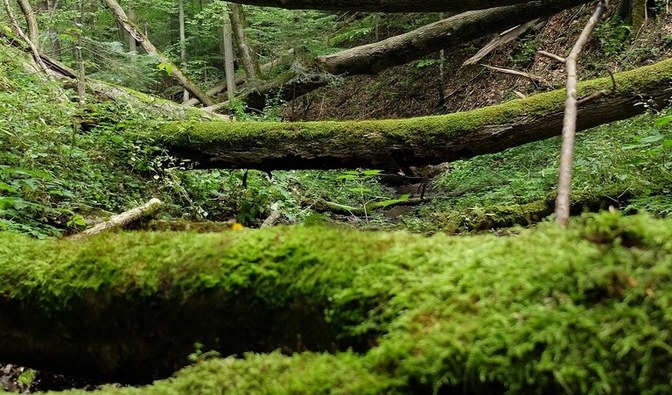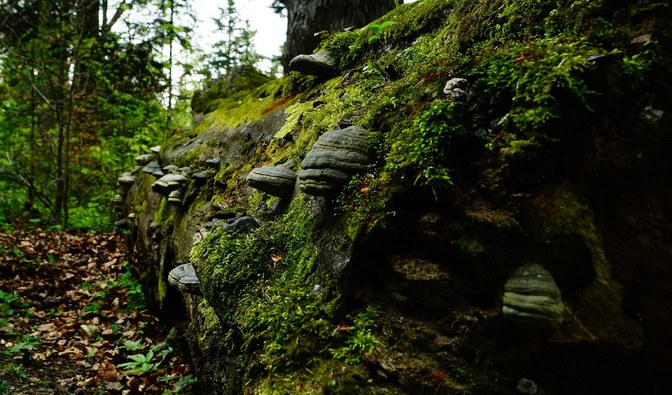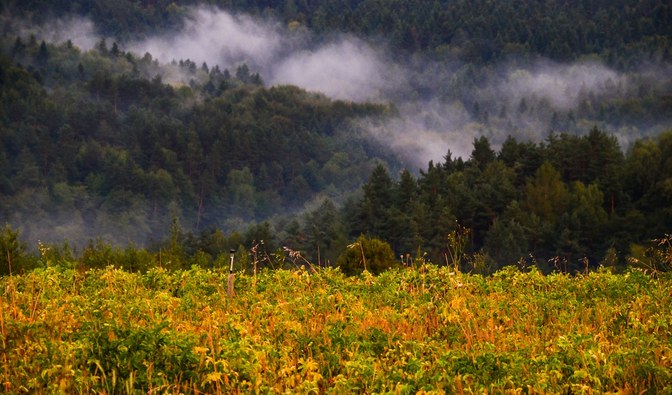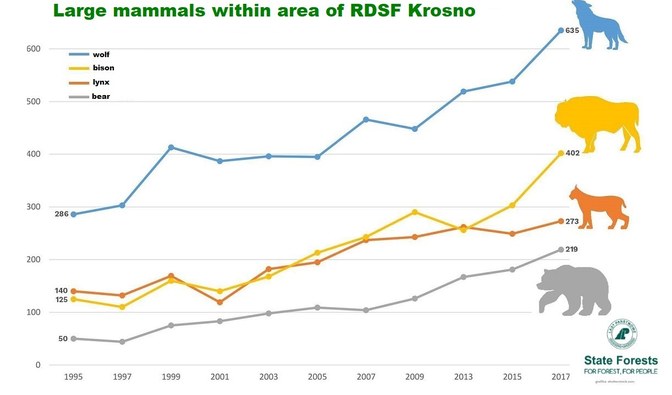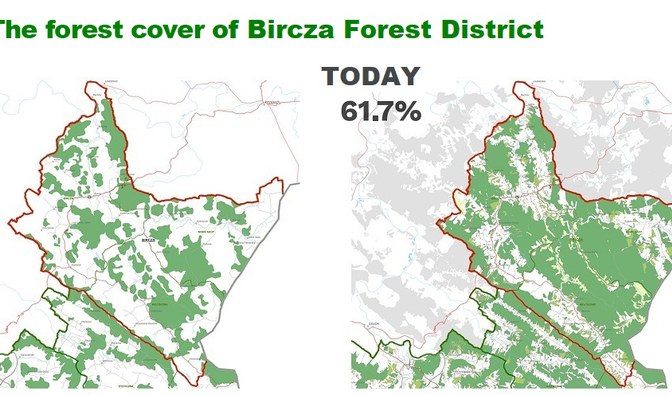The heart of the Carpathians in good hands!
Forests, which by WWF Poland are called ‘the Carpathian Forest’, are located in the Bircza Forest District (Regional Directorate of the State Forests in Krosno).
Since 1944, the foresters from the State Forests have been taking care of them. Earlier, at least from the mid-nineteenth century to the end of World War II, this region and the entire Podkarpacie were mostly covered not by forests but by arable fields. The area was also much more densely inhabited than it is today. In 1946, the forests occupied only 36% of the present Bircza Forest District area. 75 years of hard work of foresters resulted in the increase of forest cover up to almost 62%.
In addition, after decades of sustainable forest management, the Bircza forests are so rich in nature and species diversity that organizations such as WWF would like to establish a national park in this area. This is the highest form of appreciation for the State Forests and foresters. Thank you!
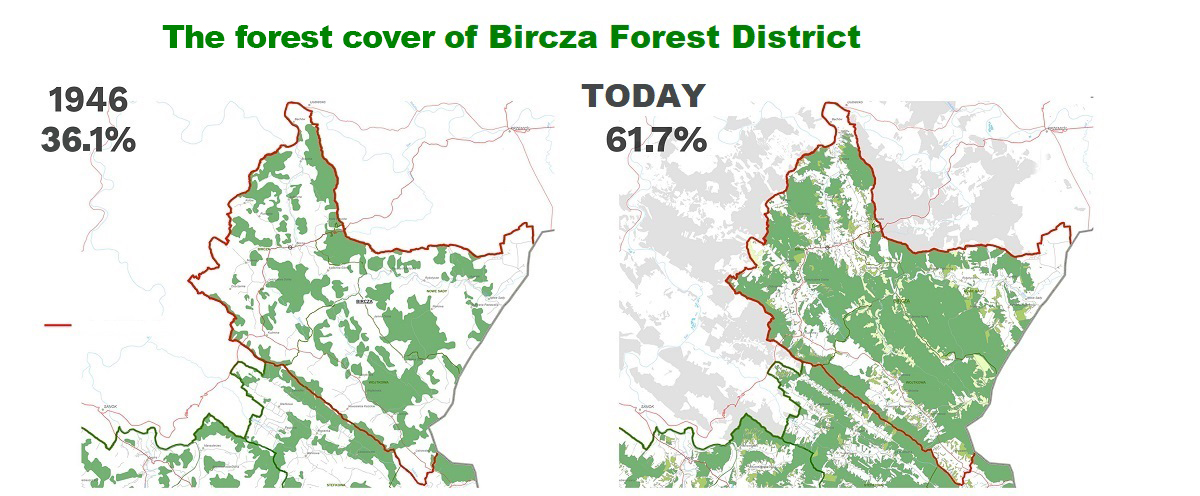
The problem is that the postulate to create a national park WWF justifies not only by their concern for nature conservation and the conviction that this form will serve best but, above all, by their claims regarding the history of forests in the region and the work of local foresters which do not reflect reality. The Foundation creates an imaginary threat and in response to it triggers the nationwide campaign “ Let's Save the Heart of the Carpathians”. As the next step they collect signatures in support of an online petition (and with them a database of e-mail addresses and new subscribers to their newsletters and requests for donations) to defend what is not endangered at all. At the same time, the Foundation does not take any action that is of real importance for achieving the declared goal - WWF activists are not trying to convince the local community to the idea of the park, which is necessary because the park is created by the act of law, however its boundaries are determined by a government regulation agreed with local self-governments.
We want to reassure all those who care for Polish nature, including the Carpathian nature, that neither the alleged "drama" is taking place in the forests of the Podkarpacie, nor in the Bircza Forest District itself – the opposite is true. Let's have a closer look at WWF's appeal step by step.
- The Foundation's activists ensure that they have spotted over 6,000 old and fine trees in the Bircza forests. In order to protect them from being cut out, they have applied to the municipality council in Bircza to recognise these trees as monuments of nature. Unfortunately, both their energy and enthusiasm were sufficient enough only to inform the media about this action. The applicants did not take part in the sessions of the council at which their application was discussed. Therefore, the local government did not initiate a legislative procedure in this matter. Let us ignore numerous errors in the application, proved by field verification (incorrect dimensions of trees in over 30% of cases, duplicated specimens, incorrect location, false description of health condition).
- In the light of law, not every tree which is old and magnificent can be recognised as a monument of nature (the dimensions are not the only criterion). This does not change the fact that there are as many as 40,000 trees in the Bircza Forest District which due to the habitat conditions and the created opportunities to develop crowns, have achieved monumental, in common meaning, sizes. And they are not at all threatened with cutting! All of them, as so-called biocenotic trees (according to the Forest Protection Instruction obligatory in the State Forests) will be left behind by foresters. What's more, cutting them is additionally banned by the internal order of the Regional Directorate of the State Forests in Krosno, which supervises the Bircza Forest District: this regulation is the most restrictive among all regional directorates of the State Forests. Few exceptions allow to cut an old tree, e.g. because of the safety reasons. In the Bircza Forest District during the last 10 years, such cases of cutting out individuals with a diameter at breast height more than 100 cm (i.e. diameter at the height of 1.3 m) were 21 (sic!) - not 7,000 a year as WWF claims.
- Foresters know perfectly well that such trees are of great value to nature also after death. That is why they leave them in the forest for natural decomposition. The amount of dead wood in the Bircza Forest District carrying out sustainable forest management, is close to the average in Polish national parks.
- In the Carpathians WWF wants to protect ‘one of the last fragments of forests with a natural character in Europe’. Unfortunately, there are virtually no natural forests in the Carpathians, which has been confirmed by Professor Wojciech Grodzki from the Forest Research Institute. These forests, which were already greatly thinned during the industrial revolution, were significantly destructed as a result of fights and robbery cuts during the two world wars. In the times of the People’s Republic of Poland, there was created a government hunting centre here, the Military Agriculture Farm was operating (it made deforestation using . . . explosives). On the other hand, a huge amount of post-agricultural land taken over by the state after the "Vistula" action was artificially forested.
- Nevertheless, the most valuable fragments of the Carpathian forests have already been protected in nature reserves, whose area in the Bircza Forest District alone is 1,500 hectares. No wood is harvested there.
- Despite this fact, WWF activists are very concerned with cutting out ‘the 100-year-old trees’ in the remaining area of the Bircza Forest District. 100 years is an old age for a human being but not for trees - everyone who has real contact with nature knows it. And by saying ‘real contact’ we do not mean keeping in touch with the Internet memos about the nature. Some species of trees, such as firs or beeches, are not harvested at this age, because according to the rules of forestry they are too young. The so-called felling age for these species is set at 120-140 years. In turn, the trees which are several hundred years old are very rare in the Bircza Forest District, they rather grow individually and they have had the status of natural monuments for quite a long time. They have never been scheduled to cutting and will never be.
- In general, the average age of forest stands in the Bircza Forest District was 69 years in 1974, and it the last year it was already 87 years. At present, in the entire Podkarpackie RDSF the average age of forest stands is 75 years. It is one of the highest in Poland and is constantly growing.
- WWF activists are also very concerned with the size of timber harvest in the Bircza Forest District. They even call it ‘an over-exploitation economy’. This is a preposterous concept: either something is an over-exploitation or an economy. The sustainable forest management conducted in the forest districts of the State Forests, including Bircza, is based on planning documents that are acts of law (i.e. a forest management plan is subject to a strategic Environmental Impact Assessment). Therefore, anyone who knows about breaking these regulations should report to the prosecutor's office. However, this is not happening. Currently, the annual harvest of wood in the Bircza Forest District amounts to little more than the yield in the average forest district in Poland, and yet the forest cover in Bircza is more than twice as high as the national average. What's more, wood resources are constantly growing in the forests of this particular forest district - in 1974 they amounted to an average of 228 m3 per hectare, and in the last year - 330 m3 per hectare.
- It may be the activists who do not know that the quantity of harvested timber does not result from the market's needs in the first place (if that was the case, entrepreneurs would not constantly accuse foresters of supplying not enough wood raw material) but from the needs of the forest. The wood is obtained, e.g. during the rebuilding of stands carried out in order to better match the species composition to a given habitat, which reduces the forest vulnerability to natural disasters. Besides, how would the forest cover of this area increase almost twice in the conditions of the supposed ‘over-exploitation economy’? How could 40,000 trees, which can be described as monumental, survive this ‘over-exploitation’ in the forests of a single forest district?
- Forest management carried out in Podkarpacie does not disturb or threaten wild animals in any way – on the contrary to the claims of WWF activists, who suggest in their campaign that certain species are endangered there. Evidence? The number of them has been growing for years - and this number is great. Over the past two decades, the populations of wolf and lynx have doubled there, and the ones of bear and bison have quadrupled. Similarly with birds: in the last fifteen years, the population of species associated with the forest environment increased by about 25%.
- Even the forest roads, demonised by WWF activists, which not only facilitate the export of wood, but also help to ensure the safety of forests and people (they are used by the Fire Brigade, GOPR, i.e. mountain rescuers, Border Guard) and serve tourists and local residents, are not any barrier to animals. This has been confirmed by observations made as part of numerous scientific projects carried out in the area of forest districts within RDSF in Krosno, including many recordings from photo and video traps.
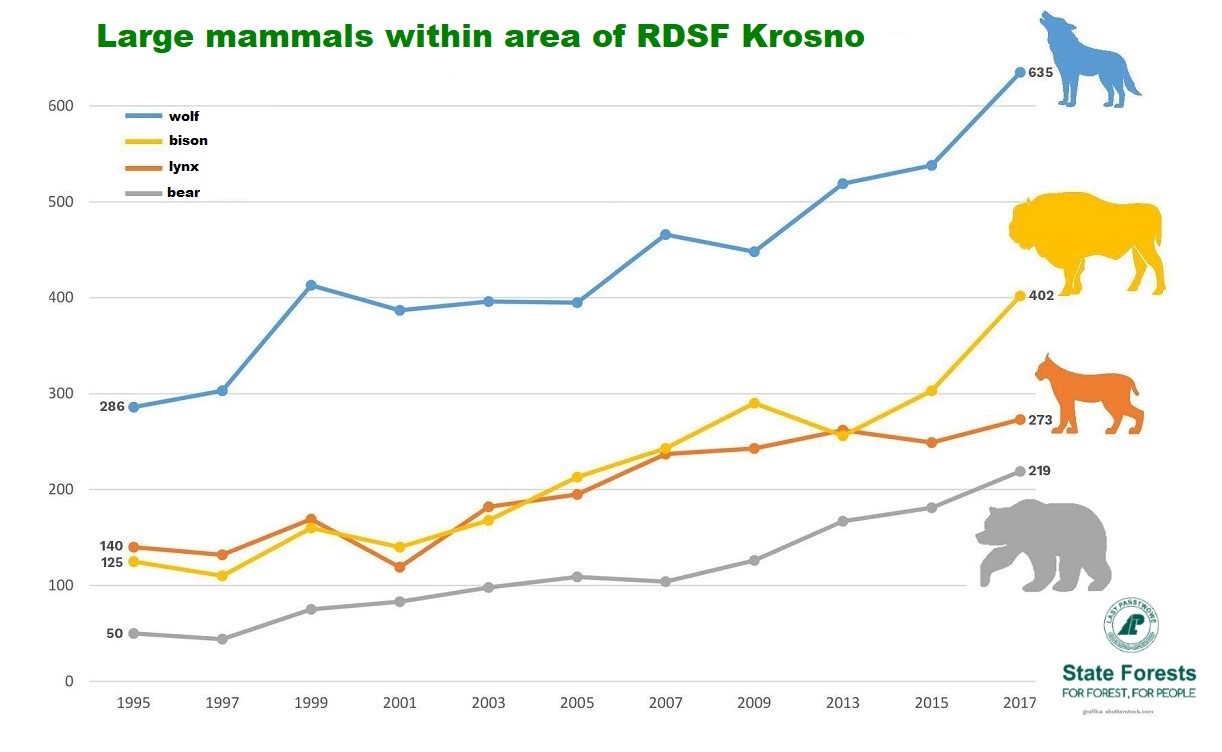
If WWF and other similar organizations emphasize extraordinary natural values and postulate establishing the Turnicki National Park in the area that foresters have been looking after for 75 years, it proves that the latter have been doing excellent job there by not only enabling everyone to use the forests and their resources in a reasonable way, but also through protecting nature properly.
Today, the Bircza Forest District covers all the cost of managing this area from its own revenues, including expenditure on nature conservation, protection the forest against fires, and the construction of tourist infrastructure (similarly as in the entire State Forests, who finance themselves). In the situation of creating a national park there, it would be maintained by taxpayers through subsidies from the state budget (probably WWF does not promise to bear all cost?).
Any solution is possible, and it is not the foresters’ decision. Of course, and this is obvious, everyone is entitled to their own opinion and push their own ideas.
We believe, however, that it is deeply unfair to use half-truths and unauthorized suggestions, to replace substantive debates with slogans performed by celebrities, to demonise foresters, to manipulate emotions and cynically use the Internet users' heartfelt gestures, even if the otherwise noble case of the national park is at stake.



